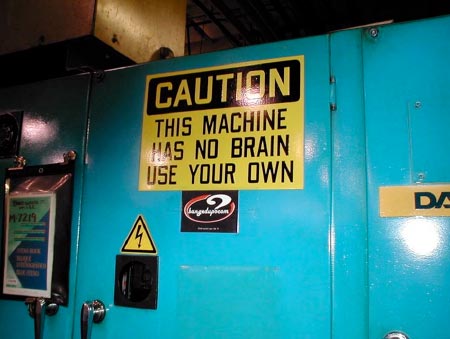Warning: Read the Signs
Safety signs provide us with vital hazard information in a number of ways: through colors, words, and pictures. Signs tell you where the hazards are and how to protect against the danger. Safety signs come in all sizes, colors, and shapes. Knowing what these signs mean and following their instructions is the key to safety.

Many accidents occur simply because a worker failed to pay attention to an obvious warning sign. Others are injured because someone forgets to post a sign. A simple, commonsense approach to warning signs can prevent many accidents.
Safety Signs:
-
Red stands for danger. It identifies immediate hazards that will cause serious injury or death. Red also indicates the location of fire equipment and emergency exits.
-
Orange means warning. Orange signs points to hazards that could cause serious injury or even death if you fail to take safety precautions.
-
Yellow signals caution. Yellow is linked to physical hazards that could cause minor or moderate injury. It’s often used to mark hazards that could cause someone to slip, trip, or fall.
-
Green indicates the location of safety equipment, such as eyewash stations, emergency showers, and first-aid kits.
-
Blue signifies general information, such as notices about safety rules and procedures.
-
Black and white are used to give instructions for housekeeping or to mark boundaries such as traffic aisles, stairways, and directional signs.
- Special signs are used just for biological hazards and radiation hazards. The biological hazard (biohazard) sign is fluorescent orange or orange-red with letters or symbols in a contrasting color.
- The biohazard sign alerts us to the presence or potential presence of blood or other biological hazards.
Avoid mourning…Acknowledge a warning!!
Download flyer: STOTW_521_Warning_Read the Signs.pdf (897.88 kb)
Download Spanish flyer: STOTW_521_Warning_Read the Signs_esp.pdf (898.38 kb)

